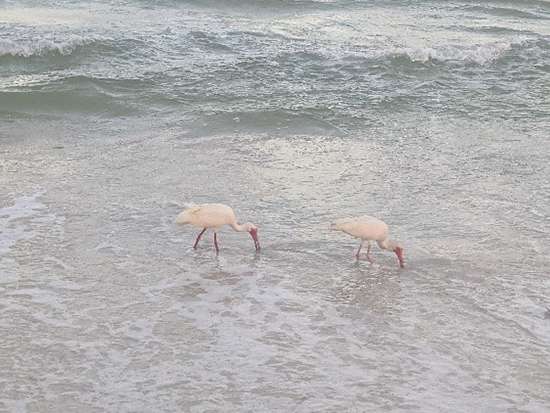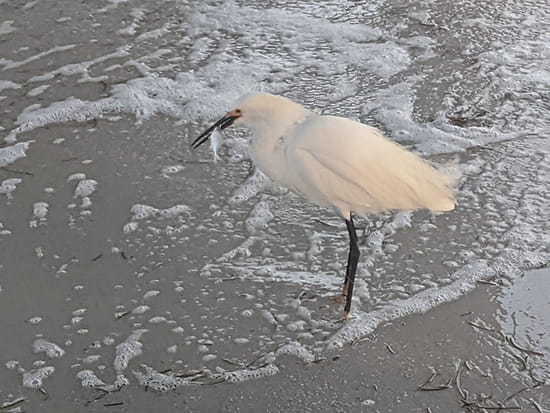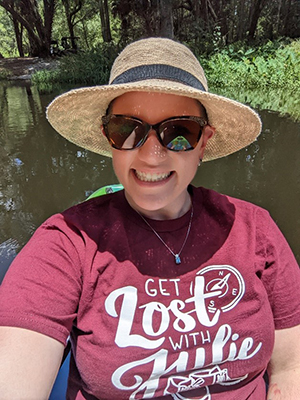Florida Exploring Summer 2022
Truth be told, Florida is not my top vacation destination. As a person with sun sensitivity, I tend to plan travel to shadier locations. Raymond James conferences often take place in Florida, so over the past 7 years, I have come to realize that tree canopy and wooded escapes can be found in Florida.
I had the honor of being invited to speak on a Sustainable Investing panel at the 2022 Black Financial Advisors Network Symposium in June at Clearwater Beach. Each morning, I woke up early to walk along the beach where I encountered many shorebirds that never make their way up this far north. Of course, I saw the standard gulls and terns you’d expect along any shoreline, but I was also delighted to encounter brown pelicans perched atop dock pylons, willets with their distinctive large white bodies and long beaks (such as the one pictured having just caught a fish for breakfast) and the eye-catching ibis with its long, curved red bill. One afternoon, while taking a call from my hotel room, I noticed a pair of dolphins riding the wake behind a tour boat! This 2-day conference taught me that we really can be immersed in nature wherever we go, even if it is not the nature we’re most accustomed to.



Six weeks later, I was back in Florida, but this time, I was in Orlando for the annual Raymond James Summer Development Conference. Prior to arriving, I did some research to find a fun ecotourism option. During this research, I learned that Orlando sits on land that was historically part of “Mosquito County” prior to becoming Orange County when Florida became a state in 1845. I saw a “kayak Eco tour” advertised as an opportunity to explore the headwaters of the Everglades, which immediately piqued my interest. This Eco tour took place on Shingle Creek, a waterway named for the cypress trees that line the shore, because cypress was historically used for shingle production.

This area is all part of protected wetlands and is home to otters, alligators, spotted gar, ospreys, herons, snapping turtles, ibis, and more. Shingle Creek eventually meets Lake Tohopekaliga when then flows into the Kissimmee River before arriving at the Everglades. This path illustrates how interconnected our waterways are, and why protecting the environment in Orlando can have an impact on everything downstream.
Invasive species are a problem on Shingle Creek, with hygrophila as the most obvious example. This plant forms dense mats along the surface of the water, preventing oxygen and light from reaching native plants and animals below it. It proliferates quickly and is extremely difficult to control once it has entered a waterway.

These two trips, despite being conference travel to commercialized destinations provided me with a wonderful opportunity to connect with nature in a new way, in places I would never seek to explore on my own. I learned so much about the unique environmental challenges facing these regions, and how fragile some of these aquatic ecosystems can be. I look forward to continuing to find ways to explore nature at future conference travel to stay grounded.




